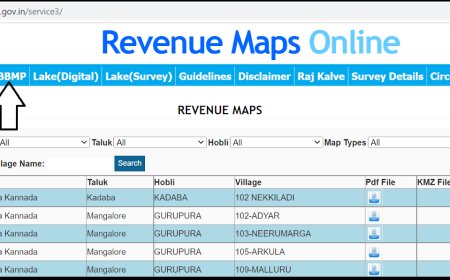33 Trips You Should Book a Year in Advance

All products and listings featured on Condé Nast Traveler are independently selected by our editors. However, we may receive compensation from retailers and/or from purchases of products through these links.
With life’s unpredictabilities, planning a trip a year in advance may seem like too much. However, one could argue that it’s precisely because of these uncertainties that a good plan, and buffers against any last-minute hiccups, are needed. Getting a head start on an itinerary, and having enough time for preparation, research, and contingencies are absolutely necessary—especially when you’re embarking on some of the most remarkable (often, once-in-a-lifetime) travel experiences that the world has to offer. There’s no time to be wasted.
“When thinking about travel that should be booked a year in advance, there are a few factors at play like availability, access, and complexity of itinerary and experiences,” says Tom Marchant, the owner and co-founder of Black Tomato. In the age of overtourism, increased international travel, and ever-changing policies, it’s also become important to think about possible travel restrictions, tourism caps, and potentially necessary permits and visas. Figuring all of this out now is well worth not having to stress later. Your future self will thank you.
We’ve put together a roster of 33 bucket-list-worthy trips that require the extra care and attention a year-long lead would provide. Whether you’re looking for a great outdoor adventure, a journey through history, a cultural excursion, or a grand seasonal celebration, we’ve got you covered. There’s no way to guarantee an absolutely flawless trip, but hopefully you can get close to perfection with some expert insights from our favorite travel experts from the Condé Nast Traveler Top Travel Specialists network.
This gallery has been updated since its original publish date. Additional reporting by Bridget Hallinan and Megan Spurrell.
 Getty
GettyWiderness safari in Kenya
One of the most sought-after safari experiences is witnessing Kenya’s wildlife—whether that be the Great Migration, when millions of zebras, wildebeests, and other herd animals travel from Tanzania's Serengeti to the Masai Mara in Kenya, or just getting a group of loved ones to join you for the trip. Alice Daunt, a travel specialist at Daunt Travel, suggests catching the Great Migration from the Masai Mara, but cautions that the “there are literally eight beds at the best camps”—not to mention a narrow window of travel (peak season being July through September). Planning in advance is to your benefit year-round, though. Condé Nast Traveler editor Megan Spurrell, who recently visited Angama Mara in the low season of February, says, "The only trip I've truly planned a year in advance was a Kenya safari with three friends—balancing so many schedules already takes a bit of lead time, but that's even truer when you have a smaller window given a season you want to catch (for us, the dry season, when we'd see lots of baby animals and fewer fellow tourists; and escape New York's winter). The good news: Once we booked our accommodations and inter-country flights to Lamu Island, we could just kick back and wait for the trip to arrive."
- Getty
A Nile river cruise through Egypt
For any history buff, a journey to Egypt's ancient sites is the trip of a lifetime. There are a couple ways to do it—by land or by Nile river cruise —but we'd argue the best trip includes a bit of both. Hop on Viking Osiris, which drifts along the Nile with thoughtful stops in Esna, where you'll tour the red stone temples of the same name, Aswan for the High Dam and Temple of Philae, and Qena, home to the grand temple of Dendera. A few years ago, Nile cruises were so quickly spiking in popularity that local operators were struggling to keep up with demand, making planning ahead crucial to nabbing your itinerary and ship of interest.
- Getty
Visit Japan during cherry blossom season
Over the past couple of years, Japan’s popularity as a tourist destination has skyrocketed, with foreign visitors coming in record numbers. The busiest time is, predictably, between late March and April during cherry blossom season. Many people opt to spend time exploring the sprawling city of Tokyo, and then venturing off to Kyoto and/or Osaka, as well as trails in rural areas to witness the ephemeral blooms of sakura against the most scenic backdrops. “Kyoto is incredibly popular and gets full,” says Amy Tadahera of Inside Japan Tours. “As do other places that used to be a bit more off the beaten path such as Kumano Kodo and the Nakasendo.” Planning ahead, and enlisting the help of an expert guide, will ensure an optimal experience. Tadahera and the folks at Inside Japan have also launched an “undertourism” initiative that introduces travelers to places that are lesser-known, but offer the same rich, cultural experiences that make Japan unique.
- Johannes Simon/Getty
Attend the once-in-a-decade Oberammergau Passion Play
Forget planning a trip a year out—you can get started on this one a decade in advance. The Oberammergau Passion Play is an epic reenactment of the Passion of Jesus Christ (his trial, crucifixion, death, and resurrection) staged once every ten years since 1680. Oberammergau itself, a tiny, quiet village nestled in the hills of Bavaria about an hour outside of Munich, is a wonder for its picturesque architecture. Come summer of 2030, when the next Passion Play will be staged (likely between May and October), the countryside’s smattering of hotels and inns will book right up with church groups making a pilgrimage from all around the world. Getting a room close by is advisable—the show generally runs from 2:30 p.m. to 10:30 p.m., a whopping eight hours. If your plan of entry is getting cast, you’re out of luck—participants, without exception, must have lived in Oberammergau for at least 20 years before being selected for the product. Make arrangements to move now and you could feature in the 2050 edition.
- Vincenzo Pinto/Getty
Observe Tuscany's Palio di Siena
While many of our travel specialists resoundingly weighed in that just about any trip to Italy—the Amalfi Coast, Sicily, Lake Como, and so on—is worth planning well in advance as the country’s tourism levels soar ever higher, one outing that would be nearly impossible to pull off on short notice is a trip to the Palio di Siena. This major horse race is held on only two days of the year, July 2 and August 16, and sees jockeys ride bareback thrice around Siena’s Piazza del Campo. The whole thing is over in less than 90 seconds, and yet Emily Fitzroy of Bellini Travel notes that it is one of Italy’s most “oversubscribed” outings. If you want to see it for yourself, book your ticket well out.
- Getty
Visit Rio de Janeiro for Carnaval
Carnival needs no introduction: The vibrant festival, with iterations all around the world, is an over-the-top celebration you have to see to believe. Carnaval in Rio is the largest of them all, meaning you'll have to compete with other travelers for tickets to February's famous Sambodrome parade, and the very best hotel (Fairmont Rio de Janeiro Copacabana, with its proximity to the beachside parties, will book up quick) and restaurant reservations. The reward? A week of samba dancing in the streets, elaborate costumes, and live music filling the city—basically, one enormous block party. Work with a connected travel specialist, and you can sign up to march alongside performers in full costume on the big night. New Year’s is just as big a catch, by the way, if you're too late to book for carnival.
- Peter Adams/Getty
A trip to Botswana's Okavango Delta
There are a million different ways to do a safari in Africa, but a trip to Botswana's Okavango Delta stands out from the rest. Not only are floodplains home to endangered species like white and black rhinoceroses, but the sprawling marsh offers the rare opportunity to do a safari by boat, with a landscape that shifts depending on water levels. Typically, the best time to visit is from May to October—snagging a spot at the camp you want during that window, of course, requires the right amount of foresight.
- Getty
A trek to Machu Picchu
Arriving to Machu Picchu on foot is on many travelers' lists for a reason. But because visiting the site, by trek or otherwise, has become so popular—with the ancient Incan ruins suffering from overtourism in recent years—the Peruvian government has placed caps on how many people can visit daily. They've also limited trekker capacity on the historic Inca Trail, a journey that can take anywhere from a couple days to a week. Book in advance to visit during the dry season (from roughly April to October), which will also help you secure one of just 400 daily tickets to climb up the iconic peak of Huayna Picchu, offering great views over the ruins for a lucky few. While there, balance out your Wonders of the World itinerary and explore the rest of the Sacred Valley—there's a treasure trove of underrated ruins and Andean cuisine.
- Getty
Naadam Festival in Mongolia
Mongolia is always on our must-visit list, but specialists caution that the “relatively uncharted destination” requires planning ahead, given that “domestic flights and accommodations are extremely limited and constantly in-demand,” says Jessica Wells of Black Tomato. Tyler Dillon of Trufflepig advises that summer is the sweet spot because of the Naadam Festival—an ancient-style Olympic games featuring wrestling, archery, and horse racing. Planning a year out will ensure you and your group—it’s always more fun with friends, Dillon says—will have access to the wide open spaces of luxury spots like Genghis Khan Retreat, a favorite amongst those who want to do some riding for themselves.
- Getty
Gorilla trekking in Rwanda
If you want to come face to face with the largest living primates—and one of our closest relatives—a gorilla trek in Rwanda must be on your list. It'll take at least a few months of planning to execute the bare bones of this trip, from securing required gorilla trekking permits to getting a reservation at the best lodges like Wilderness Safaris Bisate Lodge. But be ready for competition: There's always high demand to visit during the dry seasons from mid-December to early February, and June to September, when hiking conditions are best and malaria risk lowest.
- Getty
Island hopping Raja Ampat in Indonesia
For a truly remote seaside adventure, there is nothing quite comparable to Raja Ampat in Indonesia. The secluded cluster of islands, located off the coast of West Papua, is a marine wonderland teeming with biodiversity. This also means it is highly-protected, and has limited spots available for resorts and tours. “This place is like a living aquarium with colorful coral reefs, fish everywhere, and those jaw-dropping karst islands that just look unreal,” says travel designer Yvonne Sala. It’s remote, unspoiled, and feels like a place you’re discovering rather than visiting.” It’s a dream destination for those who love the outdoors, especially for avid divers who might want a full liveaboard experience. There are also homestays and village visits with island communities that directly support local conservation in the area, which Sala considers one of the most memorable things to do.
- Getty
A cruise to Antarctica
Over the past few years, Antarctic cruises have become more popular excursions among nature-lovers and thrill-seekers. There are more cruises, as well as newer, modern, and high-end vessels making the expedition to the remote continent—plus more specialized itineraries to choose from. This also means that while booking a trip to Antarctica has gotten a bit more accessible, it has also become more competitive. According to Andrew Browning of AdventureSmith Explorations, the lowest-price cabins, high-end cabins, and single occupancy cabins sell out the fastest. Your best bet to be able to arrange a trip suited most to your preferences. “The best trip looks different for every traveler,” says Browning. “And having someone who knows the landscape inside and out can help narrow down the options using insights you won’t find online or from operators who only promote their own trips.”
- Johny Goerend/Unsplash
See the Northern Lights on an Arctic cruise from Norway
Already ballooning in popularity as an alternative to the Antarctica cruise, sailing to the Arctic requires just as much foresight—especially if you’re trying to catch the Northern Lights. Trips from the Russian Far East are, at this time, not happening, and so Palmer suggests shipping out from Northern Norway with Svalbard as the destination.
- Getty
The Camino de Santiago in Spain
This historic pilgrimage, with a handful of trails that all converge on the town of Santiago de Compostela in northern Spain, is what bucket lists are made of. The journey—now popular among Catholics and non-believers alike—can take anywhere from about a week to a month or two, depending on where you start, with nightly stops in tiny villages throughout northern Spain and Portugal. Trufflepig's Lapostol says, “[This trip] has to be planned at least a year in advance because the ideal windows for walking in this part of the world are narrow: April to June and September to October.” Plus, he adds, the best guides and hotels “a cut above the typical pensions and inexpensive hostels” are in high demand. Booking last minute could make for a very different experience—and you probably don't want to skimp on comfort when you're walking 10 to 15 miles per day.
- Getty
Faroe Islands in the summer
The Faroe Islands, a remote territory of Denmark that sits between Iceland and Norway, is one of many destinations that has put limits on visitor numbers in an effort to combat overtourism. So, if you want to witness the archipelago's colorful seaside villages, endangered puffins, or rushing waterfalls, you'll need to secure your visit well in advance, says Black Tomato's Marchant. Doing so will also make it easier to visit during the coveted summer months, when the weather is warmer and drier, and you'll get long days with up to 20 hours of sunlight—perfect for maximizing your time on the islands.
- Getty
A cruise through the Galápagos
The Galápagos Islands in Ecuador offer travelers the rare opportunity to see endemic species that informed Charles Darwin's theory of evolution. Visitor numbers are strictly regulated to ensure that we don't trample the nearly 9,000 species that still call the archipelago home out of existence. The best way to visit is by hopping on an expedition cruise, though it's also possible to visit by land. Just note that there are caps on visitors entering the national park itself, in addition to rules on how many ships can sail the waters each year, and there are calls to further limit those visitor numbers. Sarah Casewit of Origin notes that the seasick or otherwise cruise-averse can opt to traverse the area via propeller plane instead, gaining direct access to Isabela Island.
- Getty
A cruise along the Alaskan coast
The most popular way to visit is Alaska by cruise—which means, though there are many ships and outfitters that will get you there, there are plenty of other travelers hoping to do the same. The cruises themselves don't usually require booking twelve months out, but the tours—like on-land excursions through Denali National Park's pristine wilderness, or smaller boat jaunts to witness glaciers up close and personal—do sell out far earlier, says Linda Allen-Spear of Cruises By Linda. She also cautions that the best cabins ("the low midship location is the most stable" for anyone concerned about getting seasick) also go quickly.
- Getty
A trip to Patagonia
Traveling to Patagonia is, essentially, a voyage to the ends of the earth. You'll need to first connect through a South American hub, like the tango capital of Buenos Aires or metropolitan Santiago, Chile—arguably warranting a few days of their own—before you reach the alpine lakes and glaciers of Patagonia. Explore Torres del Paine National Park, one of Chile's most iconic landscapes, and hang with Magellanic penguins at the Otway Sound, on the way to Puerto Natales (also in Chile). Or, listen to the cracks of Argentina's Perito Moreno Glacier, which is constantly moving. Plan ahead to hit it all, with stays in world-class lodges like Explora Patagonia.
- Leo Castro/Unsplash
See Brazil's desert beach
Parque Nacional dos Lençóis Maranhenses, located on the Northern Coast of Brazil, is not easy to get to. Fly into São Luís (and stay a few days—this is an old city, formerly a French capital, and the architecture is beautiful) before making the five hour drive down the coast. You'll want to book a year in advance if you're going between May and August—and you should be—to swim in the turquoise pools of water that take over the vast white sand. Snag a spot now in an eco resort like La Ferme de Georges, secure the car rental, and get everything in order so that you can hit the road without delay upon arrival.
- Getty
Following the Silk Road
Turkmenistan, Uzbekistan, and Kyrgyzstan may be off the well-trodden tourist path, but they're well worth a visit. Tracing the ancient Silk Road trade networks through the region is the perfect way to connect it all. There’s stunning Islamic architecture, deep historical roots, and several UNESCO World Heritage sites. You can even get a private calligraphy lesson with a master in Tashkent, the capital of Uzbekistan, if you book with a travel company like GeoEx far enough in advance.
- Getty
A multi-stop tour through India
There are so many iconic destinations throughout India, it can be hard to choose. Take the time to plan an extended trip so you don't have to. In just northern India alone, you can spend a couple weeks bouncing between Delhi and Jaipur, taking a sunset cruise along the Ganges in ancient Varanasi, and visiting the Taj Majal in Agra—to name just a few must-have experiences.
- drferry
Day of the Dead in Oaxaca
Day of the Dead is celebrated throughout much of Latin America, with traditions and rituals that vary greatly from one place to the next. Oaxaca's celebration is perhaps the most sought-after among travelers: not only do a large number of Oaxacans participate in the event, transforming the city's graveyards with marigolds, votives, and incense smoke, but there are lively parades that run through the historic city, which anyone is welcome to participate in. Finding a hotel room during this time is usually quite challenging, but Luis Vargas, the founder of Modern Adventure, says that demand for post-pandemic iterations is higher than ever due to a two-year break.
- Getty
A safari in the Amazon
The Amazon is one of those nearly mythical places, whose untamed wildlife and mind-boggling biodiversity could take a lifetime to explore. (It houses over 10 percent of all species known on Earth, to give you an idea.) Take the time to research which areas you most want to visit—entering through Brazil, Bolivia, Peru, Ecuador, or Colombia—and whether you want to use a lodge deep in the jungle as your homebase, book a spot on a boutique Amazon river cruise that'll follow the winding river through the rainforest. Or, do a bit of both. There's no shortage of activities to choose between, from night safaris, to canoeing alongside pink Amazonian dolphins, to visiting cities like Peru's Iquitos or Brazil's Manaus for a taste of Amazonian street food and local culture.
- Getty
Climbing Kilimanjaro in Tanzania
There are a few epic peaks around the world, like Everest, that you could spend a lifetime preparing to climb. Summiting Kilimanjaro, however, is a much more accessible adventure—local outfitters typically advise a three- to six-month training plan for getting in shape. In addition to the time needed to physically and mentally prepare, it'd be impossible to leave Tanzania without a safari in the sprawling Serengeti or a few days of letting your muscles loosen up on the beaches of Zanzibar.
- Getty
A drive across Australia
If you haven't made it to Australia yet, don't worry: Though the sprawling continent can be intimidating to traverse in one go, many of the destination's greatest hits can be fit into a two-week trip if you plan it right. To knock off highlights like the Great Ocean Drive, surfing at Bondi Beach, and diving the Great Barrier Reef, plan to rent a car for a most memorable road trip. Getting your itinerary nailed down in advance will make it easier to track flights and save on the lengthy trans-Pacific journey as well (who knows, you might even be able to work in a stopover in Hawaii with enough foresight).
- Daniel Lamotte/Getty
Hike the Dolomites
The Dolomites is a climber’s paradise. However its beauty isn’t just for the appreciation of people who enjoy the recreational sport. There’s something for everyone on this journey through the Italian Alps. This UNESCO World Heritage Site attracts millions of visitors each year not just because of its dramatic landscapes and iconic peaks, but also for the rich culture rooted in Alpine tradition and the ancient Ladin people’s heritage. Staying in mountain huts (called rifugio) is the best way to truly immerse yourself in the experience. However, Georgia Yuill, Butterfield & Robinson’s Dolomites specialist, advises booking ahead. “Rifugi often have a limited number of rooms and beds,” she says. “So given the demand, planning well in advance—especially if you need several beds—is the best strategy.”
- Ludovic Balay/Belmond
Take a ride on the Orient Express
A journey on the Orient Express is more than just a scenic train ride through Europe. It’s an immersive experience that practically feels like time travel. Belmond’s Venice Simplon-Orient-Express takes passengers on a historic ride on the rails, in fully-restored vintage luxury carriages that were originally built sometime between 1929 to 1949. The longest journey, which usually departs in September, is a five-night trip going from Paris to Istanbul (or vice versa) that typically runs just once a year and has limited spots—especially if you’d prefer a car with an en suite bathroom. “For those seeking the classic Belmond experience without committing to the full five-night itinerary, there are also several one-night journeys available around the French Open,” says Julie Durso, a private travel manager with Scott Dunn. Late May departures allow guests to catch early rounds of Roland-Garros before leaving Paris, or return to Paris in time for the finals.
- Banu R/Getty
See “The Wave”
The Wave’s beautiful, otherworldly, undulating lines and land forms are extremely delicate, made of Navajo Sandstone sculpted by millions of years of wind and rain erosion. This is why a maximum of 64 people, or 16 groups, are allowed to visit the site per day. Permits can only be obtained by the luck of the draw, either through the advanced lottery or the daily lottery. “We had a young man who applied every day for 44 days,” recalls Duane Baird of the Kane County Office of Tourism. “His last attempt before he had to return home, he won it on that day. ” Whether you’ve beaten the odds and secured a pass, or trying your luck for the daily lottery, there is no shortage of things to do in the area. Lou LaGrange, travel expert at MT Sobek, recommends either exploring other hiking trails and slot canyons if you’re staying in Kanab, Utah, or checking out Antelope Canyon and water activities in the Colorado River or Lake Powell if you’re staying in Page, Arizona. “Or simply set yourself up in an UnderCanvas near Page—or spend big on Amangiri nearby—and wait out your daily chances,” says LaGrange.
- Westend61/Getty
Stargaze in the great deserts
Camping out in the middle of the sprawling Sahara, and being able to see all the stars out in the night sky, is certainly regarded by many-a-traveler as an experience to behold. Therefore, it is also an experience that requires early preparation as tours in the peak months with ideal weather (December through March) can book up quickly. This is especially true for more unique expedition-style trips, as well as luxury camping. Jackie Roth, a travel specialist at Scott Dunn, emphasizes that space is limited especially for the most luxurious camp sites. The Discovery Bespoke Camp, situated deep in the dunes of Wadi Rum, only has six tents total. The Amar Desert Ecolodge in the United Arab Emirates has seven tents. Canvas Club, a locally run, private, nomadic luxury camp in Oman’s Wahiba Sands desert, could have as few as three tents—or even one. The benefits of booking this type of guided journey go beyond amenities. Roth says the splurge is especially worth it for the professional guides who “add folklore stories, geology lessons, and local Bedouin history that help travelers connect with the region and the local inhabitants that have been living this way for thousands of years.”
What's Your Reaction?
 Like
0
Like
0
 Dislike
0
Dislike
0
 Love
0
Love
0
 Funny
0
Funny
0
 Angry
0
Angry
0
 Sad
0
Sad
0
 Wow
0
Wow
0























































































